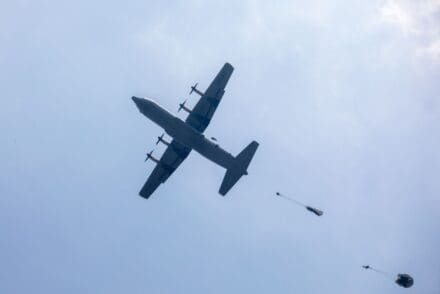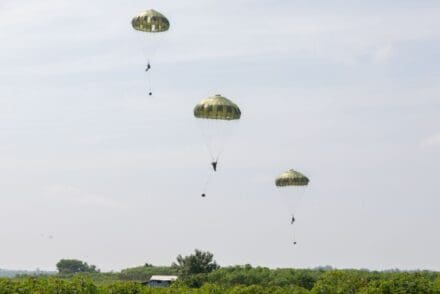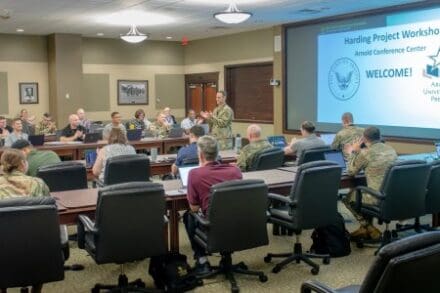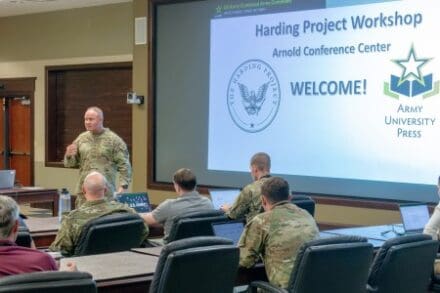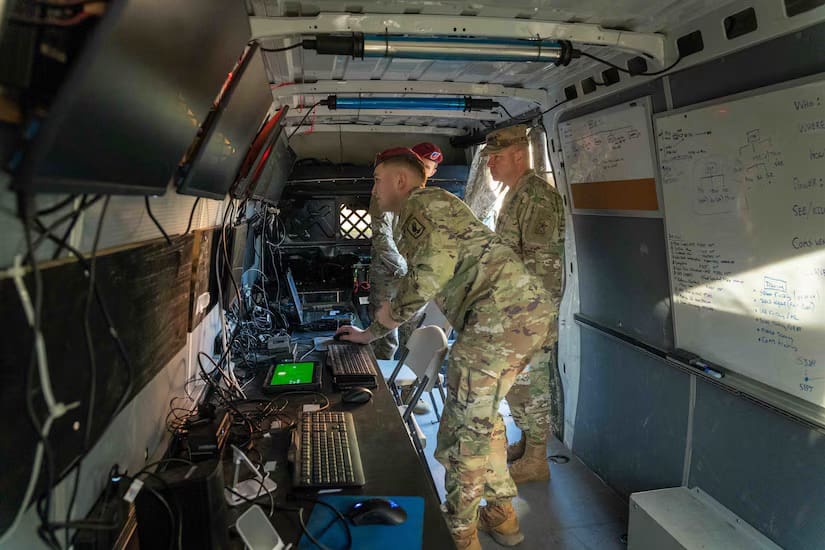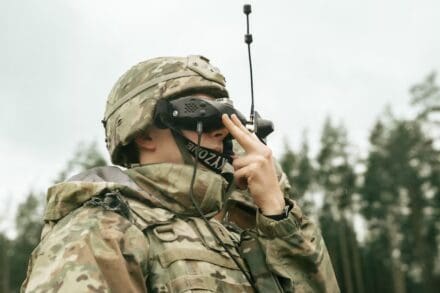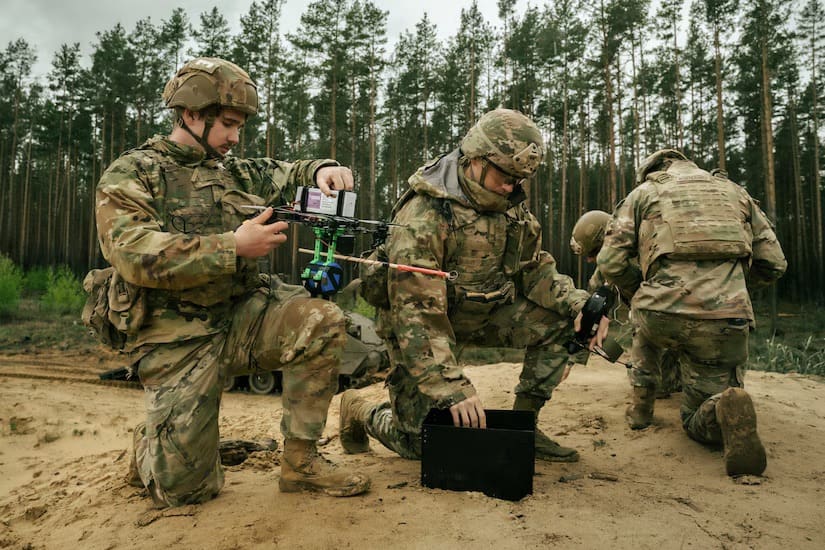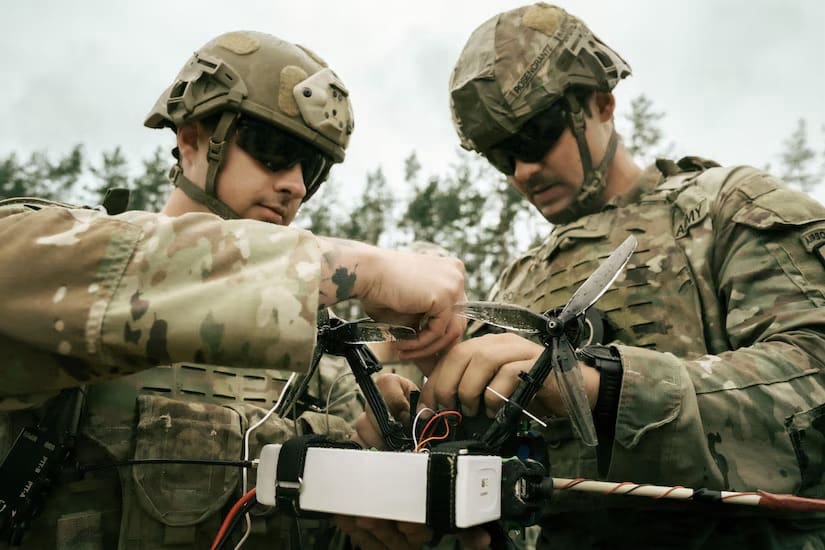
BEMOWO PISKIE TRAINING AREA, Poland — Soldiers from the Army’s 2nd Cavalry Regiment detected, tracked, engaged and defeated multiple drones at ranges between 500 and 800 meters using the Ballistic Low Altitude Drone Engagement, or BLADE, system from a Stryker vehicle at the Bemowo Piskie Training Area in northeast Poland during a live fire event for Project Flytrap 4.0 on Aug. 1.
“Some of those (drone) threats were being flown simultaneously, so the system defeated one target then quickly targeted and defeated a second target in a matter of seconds,” said David Goldstein, counter-unmanned aerial systems (C-UAS) lead for the Combat Capabilities Development Command Armaments Center.
The Armaments Center ran the BLADE science and technology project from 2016-2019 to develop a capability to counter drone threats. BLADE leverages — and enhances — a system operated throughout existing Army formations, the Common Remotely Operated Weapons Station, or CROWS.
As a remote system mounted on different types of Army vehicles, CROWS allows an operator to fire a weapon while remaining protected inside. Using an array of optics, a viewing screen and motorized gimbals and controls, the operator can effectively select and engage targets.
With BLADE, a precision radar and C-UAS fire control software is integrated with CROWS hardware and software to assist operators in identifying, tracking and pointing the weapon to a continually calculated intercept point to enable the difficult challenge of destroying enemy drones.
Capable of functioning with numerous weapons, the BLADE/CROWS combination at Project Flytrap included an M2 .50 Caliber machine gun firing multi-round bursts.
BLADE also participated in several Project Flytrap non-firing training scenarios using the radar for detection, tracking and other simulated defensive actions, according to Goldstein.
Starting in late July, Project Flytrap 4.0 was the final iteration of the C-UAS training events where Soldiers from the 2nd Cavalry Regiment and 1st Royal Yorkshire Regiment, United Kingdom, tested new C-UAS capabilities in combined exercises meant to develop and inform the future of anti-drone tactics and technologies.
“Project Flytrap is part of a series of training events designed to test and refine new counter-unmanned aerial systems technologies and tactics to respond to the evolving threat of drone warfare,” said Col. Matt Davis, transformation chief and exercise director of V Corps, Project Flytrap, during a press engagement.
Previous Flytrap events were focused on command-and-control systems and countering small UAS sensors, said Goldstein. “We were invited to come out to the latest Flytrap with our BLADE and CNALT systems because they wanted to see more kinetic capabilities,” said Goldstein.
The CNALT software plug-in, also being developed by the Armaments Center, is an application that provides tactical fire control and visualization tools to reduce time in the kill chain — the cycle of finding and identifying targets, prioritizing and coordinating attacks. Time is critical in military operations with targets in constant motion and considering that potential targets threaten harm to friendly forces.
Soldiers took 15 minutes on new equipment training for CNALT operations, said Marc Sanzari, chief of the Armaments Center Networked Lethality & Collaborative Autonomy Branch. During various training scenarios, CNALT successfully ingested real-time sensor data from the BLADE Precision Fires Radar, classified UAV tracks, and generated actionable engagement recommendations for BLADE and the Stryker commander.
For BLADE, getting the components to Project Flytrap 4.0 and operational, tested the abilities of engineers and technicians to meet the Army and DoD challenge to get new drone capabilities into the hands of Soldiers quickly and with the fewest constraints.
“Within two weeks of request, the system was installed and operational and ready for Soldier touch point training,” said Jonathan Gann, an Armaments Center mechanical engineering technician specializing in autonomous weapons.
Gann was part of an Armaments Center team who shipped the BLADE components from Picatinny Arsenal, New Jersey to Poland and conducted a field expedient installation of an existing CROWS on a Stryker vehicle to make it operational as a BLADE system.
After the installation, Gann met with Soldiers to discuss the tactics, techniques and procedures for BLADE operations within unit formation while stationary and on the move. He noted that Soldier feedback from the live-fire event provided insights on future improvements for BLADE, but also, “it highlighted the possibilities of UAS engagement in a dynamic environment,” said Gann.
“I was able to understand the fundamental workflow for the system and gunner actions within one hour of seeing the BLADE for the first time,” said Maj. Jared Whitaker, deputy chief G-31 from V Corps, who as a leader observed the entirety of the drone engagements in a seat between the gunner and radar operator.
Whitaker, who is proficient in operating CROWS, said that compared to ground engagements there were added steps in counter-drone operations. Schooling on the radar was necessary, as was additional training to become fluid during rapid reactions while performing counter drone scenarios.
“I found that the ability to engage UAS using a CROWS has gone from impossible to possible with the addition of BLADE,” said Whitaker.
After achieving Technology Readiness Level Six in 2019, BLADE has participated in various C-UAS exercise and engagements, such as Project Convergence, the Maneuver Fires Integrated Exercise and Red Sands – Operation Hard Kill.
Operation Flytrap has become the latest BLADE knowledge builder.
“The Armaments Center continues gathering insights from participating in C-UAS events and is transitioning the technology to current programs of record for near-term fielding opportunities, said Goldstein.”
By Timothy Rider



